Winter in Japan 2025: Weather, Best Places to Visit, Tips

Winter in Japan is the season of illuminations, winter fireworks near Mount Fuji, snow sports, and more. Learn about December–February weather, top places to visit, festivals, and practical travel tips for your trip.
The Beauty of Winter in Japan
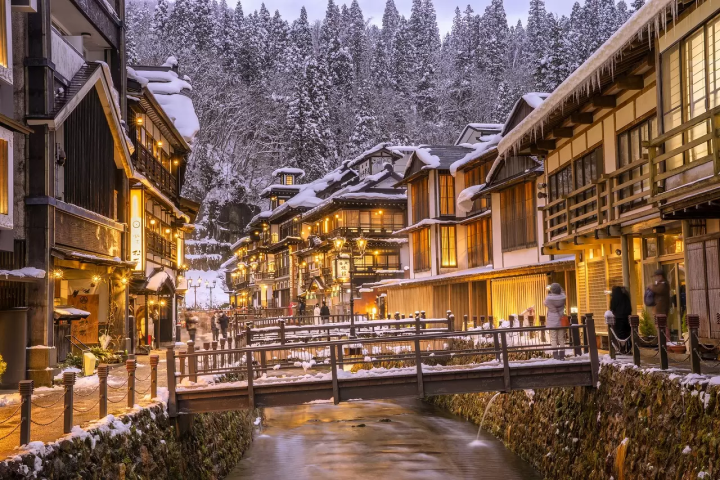
Ginzan Onsen in winter. Photo by Pixta
With over two-thirds of the country mountainous, Japan gets cold in winter and it snows in many regions. The season brings a unique beauty, plus seasonal activities and dishes you can only enjoy then.
We have compiled a guide for those planning to visit Japan during winter.
Japan in Winter: Travel Tips 2025 - 2026
Winter Temperatures in Japan
- December Weather in Japan and What to Wear
- January Weather in Japan and What to Wear
- February Weather in Japan and What to Wear
Best Places to Visit in Winter in Japan
Warmest Places to Visit in Winter
Winter Tours
Tips for Regions with Heavy Snowfall
How to Stay Warm in Winter
The Highlights of Winter in Japan
1. Winter Illuminations
2. Winter Fireworks by Mt. Fuji
3. New Year Celebrations
4. Snow Scenery
5. Winter Sports
6. Snow and Ice Festivals
7. Hot Springs
Winter Temperatures in Japan

Winter in Japan generally lasts from December to February.
In Tokyo, December temperatures tend to be around 12ºC (54°F) in the afternoon and drop to about 5ºC (41°F) in the morning and at night.
By January, afternoon temperatures drop to 10ºC (50°F) and morning temperatures tend to hover between 2ºC - 3ºC (35°F - 37°F). In February, afternoon temperatures are about 10ºC - 11ºC (42°F - 50°F) while morning and evening temperatures fall to about 3ºC (37°F).
Does It Snow in Tokyo?
In Tokyo, snow is rare in winter — usually only two or three times, mostly in January and February.
When it does snow, many train lines stop running, causing traffic jams and crowded stations. For this reason, Tokyoites generally don’t enjoy snow unless they’re safely at home, watching it from the warmth of a kotatsu.
Overall, Tokyo winters are sunny with little rain or snow. The air is dry, with humidity typically around 30% during this season.
Below, we take a closer look at weather conditions by month for regions that are of particular interest to international visitors.
December Weather in Japan
December weather in Japan varies a lot from north to south. Below are the typical average daily high and low temperatures for December in each region (approximate ranges in °C and °F):
| Region | Average High | Average Low |
| Hokkaido (Sapporo area) | 0 to 2 °C (32 to 36 °F) | −6 to −2 °C (21 to 28 °F) |
| Tokyo | 11 to 13 °C (52 to 55 °F) | 4 to 7 °C (39 to 45 °F) |
| Kyoto–Osaka (Kansai region) | 10 to 13 °C (50 to 55 °F) | 2 to 6 °C (36 to 43 °F) |
| Fukuoka (Kyushu) | 13 to 15 °C (55 to 59 °F) | 6 to 8 °C (43 to 46 °F) |
| Okinawa (Naha) | 21 to 24 °C (70 to 75 °F) | 16 to 20 °C (61 to 68 °F) |
Hokkaido is cold and often snowy by December; inland and higher-elevation areas are colder than coastal cities. December marks the beginning of the skiing season in Niseko and other ski resorts.
Tokyo and Kansai are cool and generally dry with crisp sunny days, though occasional rain and cold fronts can bring cooler temperatures.
In Fukuoka and northern Kyushu, December is generally cool and relatively mild compared with northern Japan, with occasional breezy or rainy days.
Okinawa remains mild and subtropical — comfortable but occasionally windy or rainy from winter storms; swimming is usually cooler but possible for some.
What to Wear in December in Japan
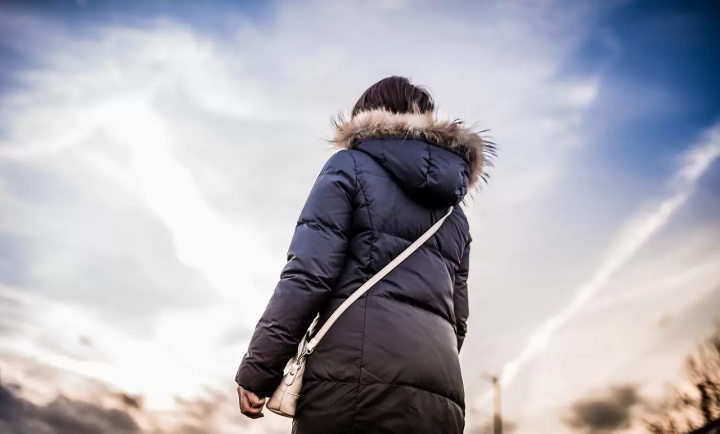
Photo by Pixta
What to wear in Japan in December depends on the region and activities, but layering is key: a thermal or long-sleeve base, a sweater or fleece midlayer, and a removable outer coat.
Bring comfortable, weather-appropriate footwear (waterproof boots for snowy Hokkaido, and closed shoes or ankle boots for other cities) plus a scarf, gloves, and a hat for colder areas.
Hokkaido requires a warm insulated coat, thermals, waterproof snow pants, and boots; Tokyo, Kyoto, and Osaka suit a medium-weight coat, sweaters, and smart-casual options for temples or dining; Okinawa needs lighter jackets and possibly swimwear if you plan to swim.
Carry a compact umbrella or raincoat, a small daypack for extra layers, and a smarter coat and shoes for formal nights. If you’ll travel between regions, pack versatile layers and a compressible down jacket.
January Weather in Japan
January is one of the coldest months in Japan. Below are typical average daily high and low temperatures for January (approximate ranges in °C and °F):
| Region | Average High | Average Low |
| Hokkaido (Sapporo area) | −3 to 0 °C (26 to 32 °F) | −12 to −6 °C (10 to 21 °F) |
| Tokyo | 8 to 10 °C (46 to 50 °F) | 1 to 4 °C (34 to 39 °F) |
| Kyoto–Osaka (Kansai region) | 7 to 10 °C (45 to 50 °F) | 0 to 3 °C (32 to 37 °F) |
| Fukuoka (Kyushu) | 9 to 11 °C (48 to 52 °F) | 2 to 5 °C (36 to 41 °F) |
| Okinawa (Naha) | 18 to 21 °C (64 to 70 °F) | 13 to 16 °C (55 to 61 °F) |
Hokkaido is very cold in January with frequent snow, and inland or higher-elevation areas are even colder.
Tokyo is generally dry and sunny but crisp and chilly, especially in the mornings and evenings.
The Kyoto–Osaka (Kansai) region is similar to Tokyo but can feel colder in the mornings and at night, with light frost possible inland.
In Fukuoka and the northern Kyushu region, January is one of the cooler months there but milder than much of mainland Japan; expect cool, often breezy conditions with occasional rain. It's a great time to enjoy the hot springs in Beppu, Yufuin, and other onsen resorts in Kyushu.
Okinawa (Naha) is mild compared with the rest of Japan, though mornings and evenings are cooler, and occasional rainy or windy days occur. The first cherry blossoms begin to appear in Okinawa around the end of January.
What to Wear January in Japan
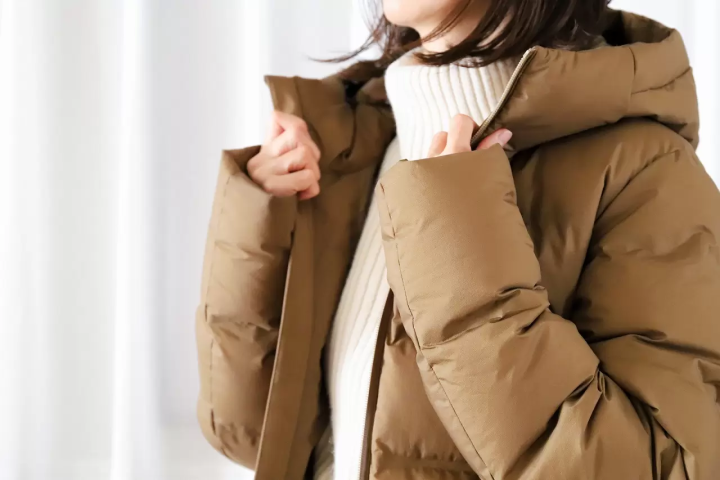
Photo by Pixta
In January, you should dress for winter with layers: a thermal or long-sleeve base, a sweater or fleece midlayer, and a warm outer coat (medium-to-heavy wool or down; heavier in Hokkaido).
Wear comfortable closed shoes or waterproof boots with good traction, and pack a hat, scarf, and gloves for chilly mornings and evenings. Bring an umbrella or compact raincoat for coastal showers.
Region specifics: Hokkaido needs heavy insulated coats, thermals, waterproof snow pants, and boots for skiing; Tokyo and Kansai suit medium-to-heavy coats, sweaters, and trousers; Okinawa requires lighter jackets or windbreakers and a sweater for cool nights.
For activities, take a warm coat and supportive walking shoes for all-day sightseeing, a smarter overcoat and dress shoes for formal nights, and full waterproof ski gear for snow sports. Pack versatile layers if you’ll move between regions.
February Weather in Japan
February is still winter in Japan. Temperatures remain cold in the north and milder toward the south.
Below are typical average daily high and low temperatures for February (approximate ranges in °C and °F):
| Region | Average High | Average Low |
| Hokkaido (Sapporo area) | −2 to 1 °C (28 to 34 °F) | −13 to −7 °C (9 to 19 °F) |
| Tokyo | 8 to 11 °C (46 to 52 °F) | 1 to 4 °C (34 to 39 °F) |
| Kyoto–Osaka (Kansai region) | 8 to 11 °C (46 to 52 °F) | 0 to 3 °C (32 to 37 °F) |
| Fukuoka (Kyushu) | 9 to 12 °C (48 to 54 °F) | 2 to 5 °C (36 to 41 °F) |
| Okinawa (Naha) | 18 to 21 °C (64 to 70 °F) | 14 to 17 °C (57 to 63 °F) |
Hokkaido (Sapporo area) is very cold in February with frequent snow and icy conditions, and inland or higher-elevation areas are even colder. The Sapporo Snow Festival and other events featuring ice sculptures are usually held in February.
Tokyo experiences one of the driest months of the year, with cool, often sunny days but chilly mornings and evenings.
The Kyoto–Osaka (Kansai) region is similar to Tokyo, though inland and mountainous spots can be colder with occasional frost.
Fukuoka and northern Kyushu experience milder weather than Tokyo and Kansai, but still cool, with occasional rain and windy days.
Okinawa (Naha) is mild and relatively comfortable compared with the rest of Japan, though occasional rainy or windy days are possible.
What to Wear in February in Japan
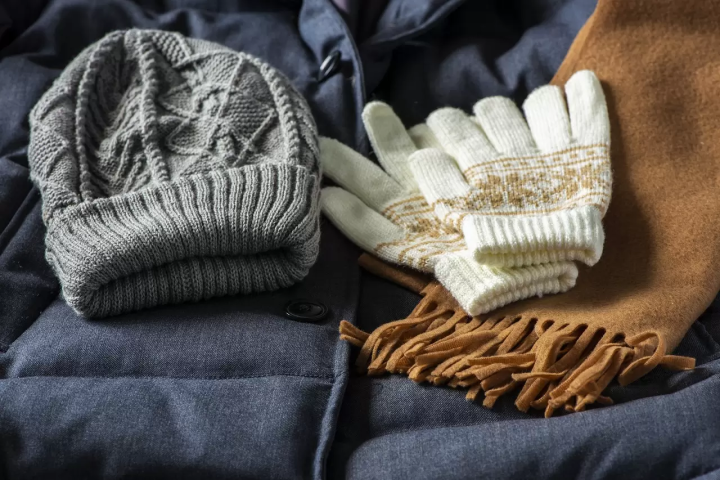
Photo by Pixta
February in Japan is still wintery—cold nationwide, especially in the north and inland—so dress in layers: a thermal or long-sleeve base, a wool or fleece midlayer, and a warm outer coat (down or wool).
Wear comfortable closed shoes or boots with good traction and waterproofing if snow or slush is likely, and bring a hat, scarf, and gloves for chilly mornings and evenings. Carry a compact umbrella or light raincoat for coastal showers.
Regionally, Hokkaido and mountain areas require heavy insulated parkas, thermals, snow pants, insulated boots, and thick socks; Tokyo, Kyoto, and Osaka suit medium-to-heavy coats, sweaters, and long pants (with light thermals if needed); Okinawa is milder—light jackets or windbreakers and a sweater for cool nights.
For activities, pack full winter-sports gear for skiing, layered walking clothes, a daypack for sightseeing, and a smarter overcoat and dress shoes for formal nights.
Best Places to Visit in Japan in Winter
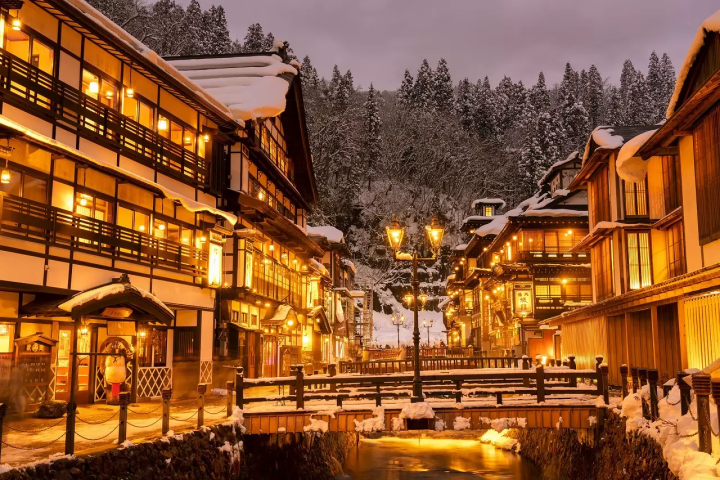
Ginzan Onsen, a hot spring resort in Yamagata. Photo by Pixta
Japan boasts some of the most breathtaking winter destinations, each showcasing its own distinct natural beauty and cultural charm.
Hokkaido’s Niseko and Nagano's Hakuba are world-famous for their pristine powder snow and exceptional skiing and snowboarding conditions, attracting winter sports enthusiasts from across the globe.
Ginzan Onsen, a historic hot spring town nestled in the mountains, offers a tranquil winter retreat with beautifully preserved ryokan inns and glowing lanterns that cast a magical ambiance against the snowy landscape.
Zao Onsen’s famed Zao Snow Monsters—spectacular ice-covered trees that resemble mystical creatures—are a natural wonder not to be missed.
Nagano is renowned for its snow-covered temples and the Jigokudani Monkey Park, where wild snow monkeys relax in steaming hot springs, creating a mesmerizing winter scene.
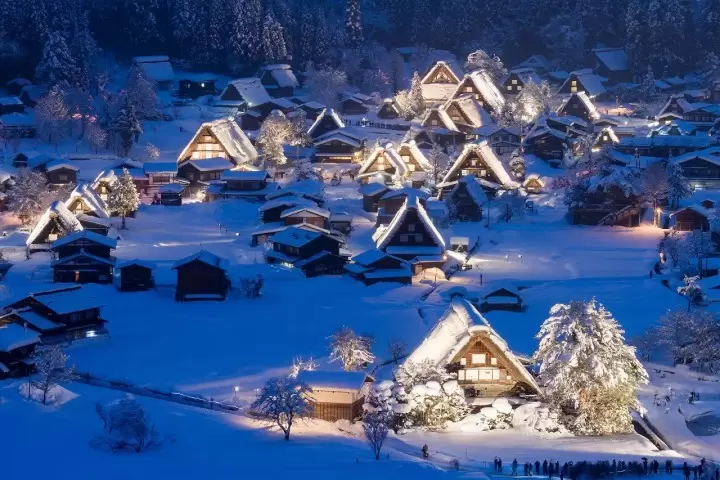
Shirakawa Village. Photo by Pixta
Shirakawa-go, a UNESCO World Heritage site, enchants visitors with its picturesque gassho-style farmhouses blanketed in snow. The houses are illuminated in January and February, creating a fairy-tale-like winter landscape.
Additionally, Sapporo’s Snow Festival, held in February, draws crowds each year to marvel at intricate ice sculptures that light up the winter night.
Read also
Warmest Places to Visit in Japan in Winter
The warmest places in Japan during winter are found primarily in the southern and southwestern regions of the country.
Okinawa's islands enjoy a subtropical climate, with mild temperatures typically ranging from 15 to 20°C (59 to 68°F), making them popular winter destinations for those seeking a tropical atmosphere, beaches, and outdoor activities.
Kyushu, particularly areas like Kagoshima and Miyazaki, also experience relatively mild winters, often staying above 10°C (50°F), thanks to their southern location and geothermal activity.
Oita, home to hot springs resorts like Beppu and Yufuin, as well as Kumamoto with its hot springs in the Aso caldera, is also a great destination for those who seek a warm winter.
Meanwhile, the southern parts of Honshu, such as Hiroshima and Okayama, tend to have milder winters compared to northern Japan, though temperatures are still cooler than in the islands.
Overall, these regions offer a comfortable escape from the colder, snow-covered areas typical of northern Japan during the winter months.
Winter Tours in Japan
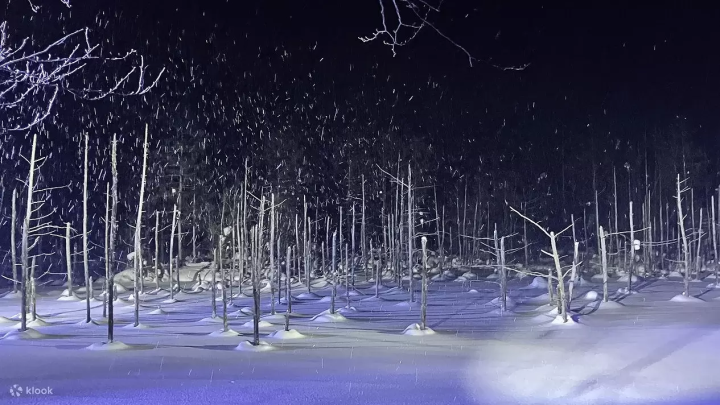
Photo courtesy of Klook
Experience the enchanting winter landscapes of Japan through a variety of expertly curated tours that showcase the country’s natural beauty, cultural heritage, and seasonal magic.
In Hokkaido, the Biei Winter Blue Pond and Shirahige Falls Illumination Day Tour departing from Sapporo is a must-do for nature lovers.
This guided day trip takes you through iconic winter sights such as the mesmerizing Blue Pond, where icy waters are illuminated with colorful lights against a snowy background, and the majestic Shirahige Falls, adorned with sparkling icicles.
Along the way, you’ll explore picturesque snow-covered forests and charming local attractions, all while savoring delicious Furano specialties for lunch.
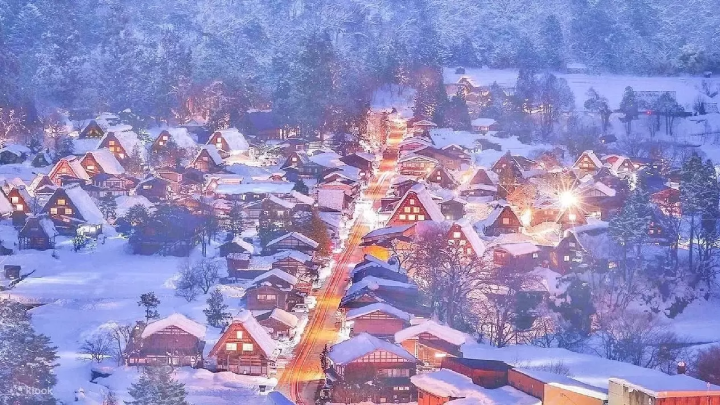
Photo courtesy of Klook
If you’re seeking a superb winter escape from Nagoya, the Shirakawago Light-up and Takayama One-Day Tour offers an extraordinary experience.
This small-group adventure grants a rare chance to witness Shirakawa-go’s UNESCO World Heritage site illuminated in its breathtaking winter glow—an awe-inspiring scene that’s only available for four days each year.
After marveling at the enchanting light display, relax and indulge in local cuisine as you wander the charming historic streets of Takayama. Capture breathtaking photos and create lasting winter memories in Japan’s picturesque countryside.
Finally, for a perfect combination of cute wildlife, hot springs, and scenic landscapes, the Zao Fox Village and Ginzan Onsen One-Day Bus Tour departing from Sendai is an ideal winter outing.
Explore the adorable foxes at Zao Fox Village, where fluffy creatures roam freely in a snowy setting, and then relax in the historic Ginzan Onsen, famous for its beautifully preserved Taisho-era architecture and restorative hot springs.
Led by a friendly English-speaking guide and with comfortable transportation, this tour offers an accessible and memorable way to enjoy Tohoku’s winter charm.
Tips on Traveling in Regions With Heavy Snowfall
While Hokkaido is famous for its snow scenery and ski resorts, all the regions in northern Japan, including Tohoku (Akita, Iwate, Yamagata, Miyagi, Fukushima, etc.), the prefectures along the Sea of Japan (Niigata, Toyama, Ishikawa, Fukui), and mountainous regions such as Nagano and Gifu see heavy snowfall from December until February.
If you plan to visit these regions, please be extra careful as traffic congestion and other trouble may occur due to the snow. We suggest using public transportation as much as possible while keeping an eye on weather forecasts.
On the other hand, if you have experience driving on snowy roads and wish to explore destinations off the beaten path by car, please take all the necessary precautions and enjoy your trip.
Please refer to the article linked below for important information and tips on driving in Japan in winter.
If you plan to explore Japan by rental car, use the coupon below to get a 10% discount on Nippon Rent-A-Car services.
How to Stay Warm in Winter in Japan
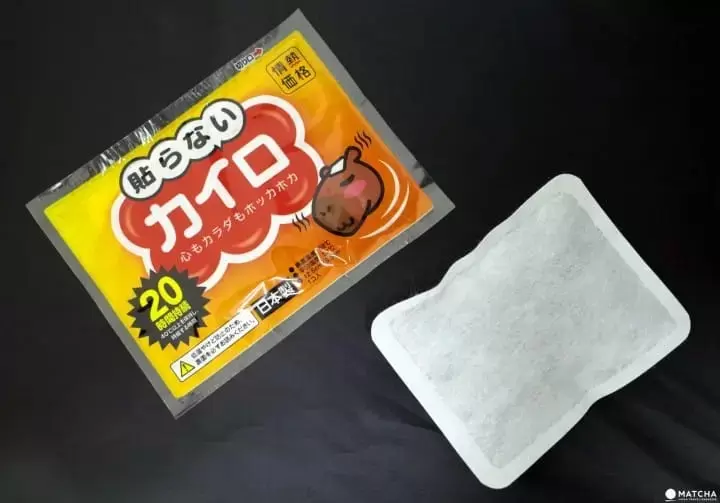
If you plan to be outside for a long time on cloudy days or in the evenings, we recommend that you use disposable kairo (heating pads, also called pocket warmers) to protect your hands and feet from the cold.
The heating pads can be purchased at any convenience store, supermarket, and drugstores. A pack of 10 heating pads costs around 200 yen. In order to use them, you just need to open the pack.
The iron sand contained in the pad will begin to heat up in contact with the oxygen in the air. The pad will stay warm for 8 to 12 hours.
Please keep warm by wearing proper clothes and drinking hot drinks. If you do catch a cold, stop by a drugstore such as Matsumoto Kiyoshi and get some medicine. Use this MatsuKiyo 17% coupon to get a discount on your purchases.
Light medicine to soothe a sore throat or to treat a fever can be bought without a medical prescription. In case of high fever and severe coughing, it's recommended that you go to the hospital.
In order to describe your symptoms to the drugstore staff or a doctor, please use the Japanese phrases compiled in the following article.
↑ Return to the top of article.
The Highlights of Winter in Japan
1. Winter Illuminations

Winter illuminations are one of the distinctive features of this season in Japan. The cities and towns are decorated with beautiful lights from around the end of November to February.
In Tokyo, you can find beautiful illuminations around Tokyo Station, in Ginza and Yurakucho, as well as Ebisu and Roppongi.
The wide parks located less than one hour away from Tokyo, such as Sagamiko Pleasure Forest and Ashikaga Flower Park, have been drawing the attention of thousands of visitors thanks to the innovative collaboration between light and nature.
In Osaka, the Nakanoshima Park Illumination has an exciting theme every year, while Kobe's Illuminarie are famous worldwide for the scale and splendor of the lights.
If you visit Japan in the winter, do check out some of the light-up events around the city!
Read also
2. Winter Fireworks near Mount Fuji
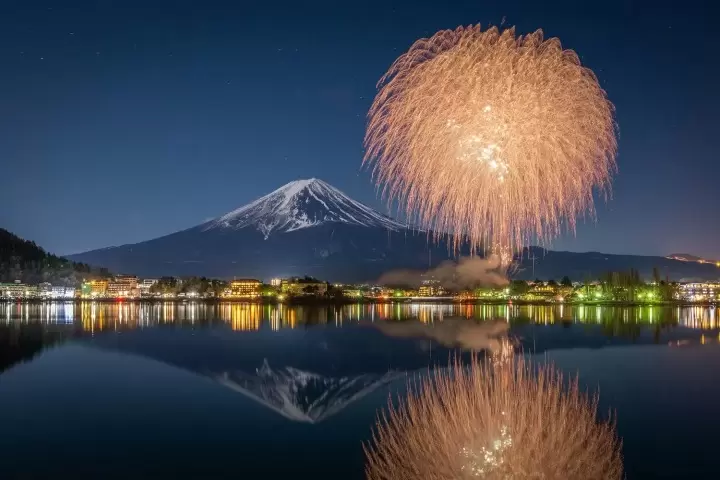
Photo by Pixta
Fireworks are usually associated with summer in Japan, but winter displays have become more common because the clear air makes them especially vivid.
A popular example is the Kawaguchiko Winter Fireworks Festival near Mount Fuji, held every Saturday and Sunday from late January through February.
In Tokyo, the Odaiba Rainbow Fireworks take place five times in December. The Atami Marine Fireworks are also notable, often paired with hot springs and relaxing ryokan stays.
See the links below for articles listing winter fireworks by region.
Read also
3. New Year Celebrations
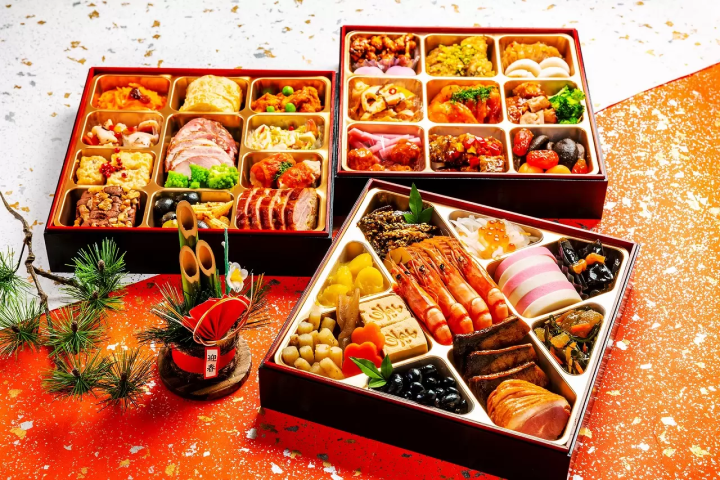
Osechi cuisine. Photo by Pixta
From around the beginning of December, you can feel everyone's anticipation of the New Year celebrations all around the cities and towns of Japan.
The shops will be showcasing products for the New Year, such as auspicious osechi cuisine, New Year's decorations, New Year's greeting cards and lucky bags (fukubukuro) full of goods that can be bought at special discount prices.
If you spend the New Year in Japan, how about joining the crowds for the traditional New Year midnight shrine or temple visit?
In Tokyo, there are plenty of countdown parties and concerts held either in the open or in clubs and live music venues. The New Year's Fox Parade held in Oji, a town in the Kita ward of Tokyo, is increasingly popular, attracting participants from all around the country.
Read also
↑ Return to the top of article.
4. Beautiful Snow Scenery

The Shirogane Blue Pond in Hokkaido
When it comes to winter, natural scenery never fails to capture our hearts. The sight of entire vistas glittering white with freshly piled snow will both refresh and enthrall you.
However, such scenery cannot be enjoyed everywhere in Japan. In fact, in big cities like Tokyo, Osaka, and Fukuoka, snow is a rare sight.
Hokkaido is the first area to experience snowfall in Japan, with the first snowflakes drifting down in early November. The frozen Blue Pond in Biei and the drift ice in Abashiri are some of the splendid winter scenery in Hokkaido.
In Aomori, Akita, and Iwate, snow begins to fall around mid-November, while in Yamagata, Miyagi, and Fukushima, it will start snowing in late November.
Ginzan Onsen, a famous hot spring town in Yamagata, or the snow monsters of Zao are some of the sights that shouldn't be missed in winter in northeastern Japan.
In Niigata, Toyama, Ishikawa, Fukui, Gifu (Takayama), and Nagano, it begins snowing in early December. The Shirakawa-go Village or the hot spring resorts in Takayama is where you can enjoy idyllic winter scenery. You can visit these areas on bus tours from nearby major cities like Nagoya or Osaka.
Even in regions where snow does not tend to pile up, you can find snowy landscapes if you head towards the mountains.
For example, snow is very rare in Kyoto itself, but places like Kinkakuji Temple, Ginkakuji Temple, and Kifune Shrine are famous for their snowy backdrops in the winter.
The combination of temples and gardens is particularly gorgeous, and many visitors come to Japan during wintertime just to enjoy these evocative scenes.
Read also
↑ Return to the top of article.
5. Winter Sports: Skiing, Snowboarding, and More

Japan is a mountainous country, which means it's an ideal environment for winter sports such as skiing, snowboarding, skating, and snow trekking.
Hakuba (Nagano), the GALA Ski Resort (Niigata), and the Bandai ski Resorts (Fukushima) are popular ski resorts that can be easily accessed from Tokyo.
Hokkaido's Niseko area is the go-to destination for those who wish to enjoy several days of skiing on powder snow. Additionally, there are six ski resorts near Sapporo, and other excellent slopes near Chitose, Rusutsu, and Otaru.
Read also
6. Snow Festivals
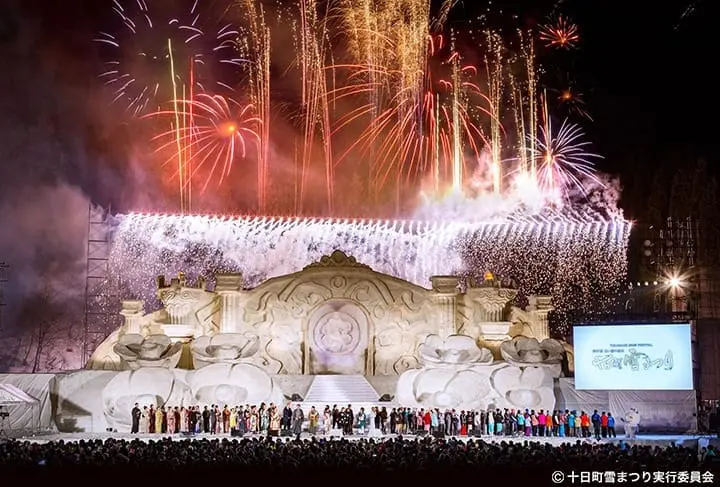
Gorgeous snow festivals are being held at various locations in eastern and northern Japan, such as the Sapporo Snow Festival, the Asahikawa Winter Festival, and the Otaru Light Path.
They all contain extravagant displays of buildings and statues made completely out of snow and ice, which are illuminated at night, creating a wonderful landscape that can be enjoyed only during this season.
Each festival has various events that attract many visitors from all around the country. The tasty hot local dishes available at the yatai food stalls are themselves one of the attractions at these events.
Read also
7. Hot Spring Baths

Winter is also the best time to appreciate hot springs. There's nothing like warming up by taking a hot bath in thermal water. Moreover, many hot spring resorts in the mountains offer open-air baths with wonderful views.
Noboribetsu Onsen in Hokkaido, Manza Onsen in Gunma, and Nozawa Onsen in Nagano are just some of the places where you can enjoy the amazing experience of taking a bath while gazing at the snowy landscape outside.
FAQ
Should I visit Japan in winter?
Visiting Japan in winter can be a wonderful experience, as the country offers a variety of unique seasonal attractions and activities during this time. For instance, winter is a great time to visit the northern island of Hokkaido for its snow festivals and winter sports, or to enjoy the beauty of snow-covered landscapes in regions such as Nagano and Shirakawa-go. Additionally, winter is also a great time to enjoy traditional hot springs (onsen) and seasonal cuisine, such as hot pot dishes and seasonal seafood.
However, if you are not a fan of cold weather or snow, you may want to consider visiting Japan during a different season. Keep in mind that the weather and temperature can vary significantly between regions, so it's important to plan accordingly based on your interests and preferences.
How cold is Japan in winter?
The temperatures in Japan during winter can vary depending on the region and the specific time of the season. In general, northern areas such as Hokkaido experience colder temperatures, with average highs often around freezing or below. Other regions, such as Tokyo and Kyoto, typically have milder winter temperatures, with average highs ranging from around 8 to 12 degrees Celsius (46 to 54 degrees Fahrenheit). However, it's important to note that cold snaps and occasional heavy snowfall can occur, particularly in the northern and mountainous areas. It's a good idea to check the specific weather patterns for the time and region you plan to visit when considering a trip to Japan in winter.
Is Japan cheap in December?
The cost of visiting Japan in December can depend on various factors such as transportation, accommodations, and seasonal activities. Specifically, December is considered to be a part of the high travel season due to the winter holiday season, especially with the popularity of Christmas and New Year's celebrations. As a result, you may find that prices for flights, accommodations, and certain attractions could be higher than during other times of the year. On the other hand, many shops and department stores hold year-end sales and it's easier to find bargains. Additionally, there are seasonal activities and events unique to December, which can add value to your visit.
It's always best to plan ahead, compare prices, and consider off-peak destinations and activities to make the most of your budget when traveling to Japan in December.
What should I wear in winter in Japan?
In winter, especially in the colder regions of Japan, it's important to dress warmly and layer your clothing to stay comfortable. We suggest wearing a eavy coat or insulated jacket, especially in colder regions, as well as layered clothing and thermal undergarments to trap heat and stay warm. Scarf, hat, and glove are important for protecting your neck, head, and hands from the cold. Waterproof and insulated footwear along with warm socks are essential if you plan to spend time outdoors in cold temperatures.
Is Kyoto worth visiting in winter?
Yes, Kyoto is definitely worth visiting in winter. In addition to the beautiful temples, gardens, and historical sites that Kyoto is famous for, there are beautiful winter illuminations at Kyoto Station and other locations, which add to the city's charm. The New Year traditions, which include special ceremonies at shrines and temples, as well as seasonal cuisine, are also a unique feature of Kyoto in winter.
Additionally, Kyoto's traditional machiya townhouses and streets take on a special beauty in the winter, especially when dusted with snow. Please note, however, that it rarely snows in winter; there may be some snowfall in January and February.
Does it snow in Japan?
Yes, it does snow in Japan. Japan has various regions that experience snowfall during the winter months. Northern regions like Hokkaido, parts of Tohoku, and the Japanese Alps are known for heavy snowfall, which makes them popular destinations for winter sports enthusiasts. In contrast, areas like Tokyo may experience occasional snowfall during the winter, but it is typically not as heavy or consistent as in the northern regions.
Enjoy Your Winter Trip to Japan!
Winter in Japan is cold, but there are so many things that can only be enjoyed during this time: hot spring baths, hot pot dishes, snow-covered scenery, New Year events, and many more. Make sure to dress warmly and head out to experience everything that the season has to offer.
Read also
Main image by Pixta
This is the official account of MATCHA's editorial department. Our articles feature useful travel information for visitors to Japan, from how-to guides to recommended places to visit.

































































![[Coupon Available] Attention Overseas Winter Sports Fans! Nagano's Sports Depot Has Evolved](https://resources.matcha-jp.com/resize/720x2000/2026/01/05-254819.webp)
![[2 hours from Tokyo ] 10 Quiet and Breathtaking Views of Mount Fuji in Yamanashi Hokuto City , Yamanashi - Part 2](https://resources.matcha-jp.com/resize/720x2000/2025/12/16-253037.webp)
